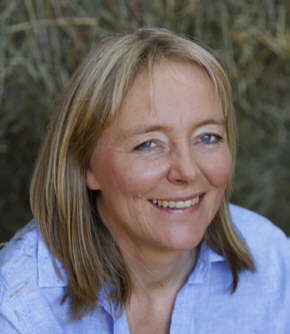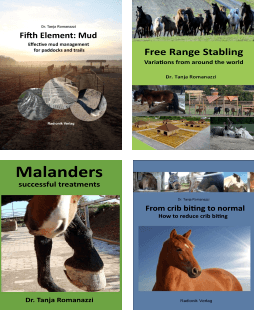Why won’t my horse stop eating?
Horses eat constantly. Most people are aware of this. But there are still a number of horses who take this to extremes, who really do eat non-stop. When does this stop being normal behavior? What are the causes? What can you do about it?
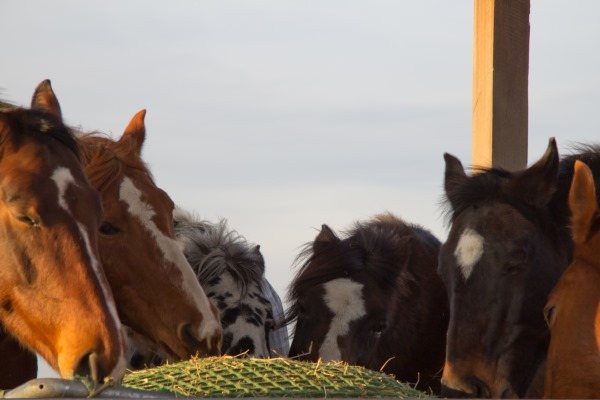
Foto von Anne Schmidt/Stefan Köhler
Horses have very small stomachs compared to their size, with a capacity of only around 15 liters. This is why horses constantly eat small amounts; the food stays in their stomachs for only 2-3 hours after which it is passed into the intestines for further digestion. If no more food follows, this is delayed. If their is an over 4 hour break in feeding (a horse will only do this of its own accord in exceptional situations), the food will stay in the stomach for an unnaturally long time, leading to a high concentration of acids in the stomach and digestive problems (Pferde fit füttern, Dr. Christina Fritz).
So taking a feeding break for a maximum of 4 hours is normal and healthy behavior for a horse. This is also the case during the night. (Horses kept in stalls with sawdust bedding who are given their last small hay feed in the evenings will have real problems!)
Short breaks in feeding, on the other hand, are healthy and you should be able to observe these. Camargue horses spend around 60% of their day feeding, which also means that they spend 40% of the time = 9.6 hours not feeding. During this time they sleep, nap, nibble each other, play, walk or occasionally run.
So why do our “domestic” horses seem to spend all their time eating (if there is a 24 hour supply of hay)?
The first possible explanation is mineral deficiency. Many of us will be familiar with sudden cravings for sweet or greasy food, which can often lead to binge eating. However, if you consciously make sure you get enough minerals and essential fatty acids, then these cravings will disappear completely (if you want to try it out yourself I would recommend algae tablets + chia seeds and plenty of non-carbonated water). I can therefore well imagine that a mineral deficiency can also be a significant factor for horses. They should be watched carefully. If you are unsure, you would be well-advised to contact an independent nutrition consultant (e. g. Constanze Röhm).
But feeding is only one side of the coin; the other side is how the horse’s body absorbs and digests the food. So if you’re providing the right supplements but your horse still won’t look up from its hay all day long, this could be due to a metabolic disorder. These unfortunately cover an enormous range. They can be an imbalance in gut bacteria, damage to the stomach and intestinal membranes, endocrinal disorders such as insulin resistance, EMS etc. and many others. Most horses will display further additional symptoms (abnormal fatty deposits, water retention, a dull coat, skin disorders, listlessness and others). The only solution is to call in an experienced vet to find out the cause and take appropriate measures.
Your horse’s mineral intake is adequate, he looks perfectly healthy but he still eats too much? In my experience there are a number of causes that may result from the layout of your free range stable and/or how the herd is made up.
For example, we have one free range group for whom 24 hour hay feeding works very well and two other groups that tend to overeat. They are all fed the same minerals and it is highly unlikely that two entire groups should suffer from metabolic disorders while the third remains healthy.
When designing a free range stable, it is a good idea to place the feeding area as far away from other attractive areas, such as the run-in shed, watering trough, rest and play areas, as possible. First of all, this motivates the horses to move as much as possible and they will only return to the feeding area when they actually want to feed. You can reinforce this behavior by making it difficult to see the entire area clearly, for example by blocking part of the view with a hedge. Most horses are curious and want to be able to see everything. This creates an added motivation for repeatedly walking around all the areas.
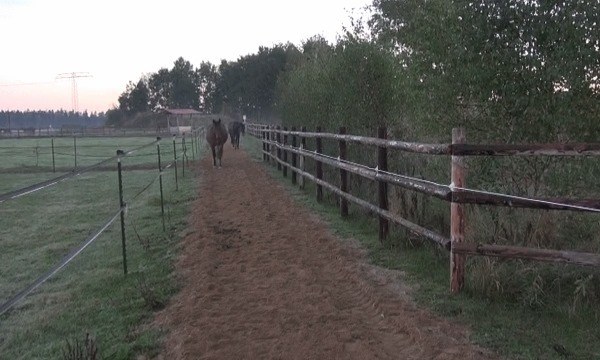
Other causes for “constant non-stop feeding” can be found in the way the herd is structured. Horses can be as prone to nervous or “stress” eating as humans. So if the herd is not harmonious, then there will be a lack of positive social contacts, such as playing, nibbling each other or taking naps together. Instead, they feed together in order to experience a minimal feeling of community. So if possible, one should always try to maintain a harmonious herd structure.
Groups of geldings tend to work very well. None of them has to protect anyone else. Aggressive behavior is very rare, instead, there is a lot of play (which also provides a positive distraction from feeding ).
I am not fond of groups exclusively composed of mares. They do not exist in the natural state and I have frequently observed (especially if there are no geldings in the adjoining areas) that the mares feel the lack of a protective male. There is more bitchy behavior, shorter periods of sleep and possibly more stress feeding. In mixed groups, it can be helpful to have one official boss (a gelding whom the mares accept, but who does not exhibit stallion-like behavior) and otherwise only geldings that are clearly subordinate.
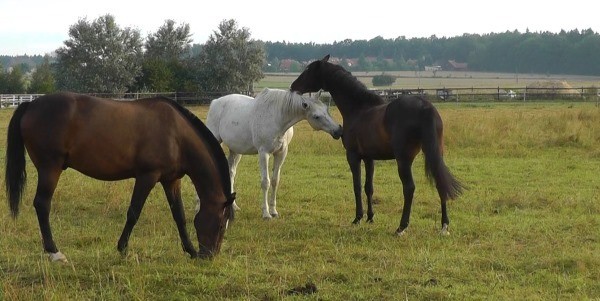
I find that grouping older and younger horses together can have a positive effect. The younger horses do not have to take on the role of the boss (which frequently demands too much of them), they feel safe and can learn a lot from the older horses. On the other hand, the older horses are kept “on their toes” and don’t just lapse into paralyzing, overeating apathy.
